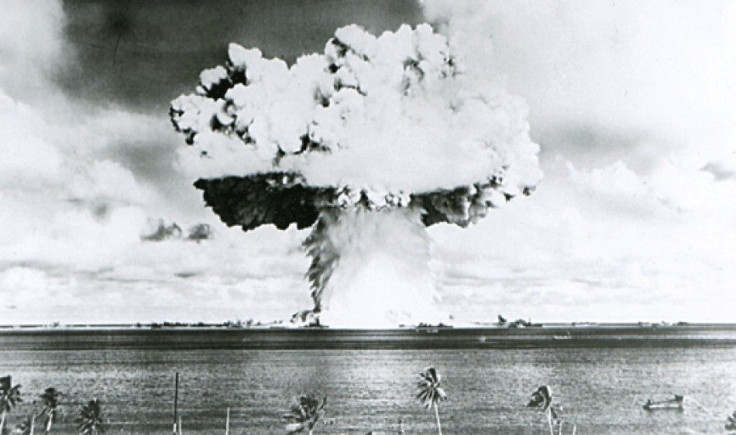Nuclear War Dangerous To Global Environment, Weather, Ecosystems – NCAR

Not only deaths and infrastructure chaos are sure to result from nuclear wars, but also much devastation to the planet's natural way of things, such as the environment, weather and ecosystems, among others, scientists from the US National Center for Atmospheric Research said. They warned global leaders to rescind from even referring to their respective nuclear arsenals as possible means to overturn enemies.
Mike Mills, a scientist at the U.S. National Center for Atmospheric Research, told Sputnik News on Tuesday that the planet's natural environment and weather patterns are very much at risk to even a small scale war involving nuclear weapons. He said a small or limited regional nuclear war would have catastrophic impact to the world's overall atmospheric and climate conditions.
Using a hypothetical nuclear exchange of a hundred 15-kiloton warheads between India and Pakistan, he stressed the rest of the global population can't say good thing it only happened there. He said the whole globe stands to get affected because "everything will be dropping - temperatures, precipitation and sunlight" while the amount of "harmful ultra-violet would increase" because of the further deterioration to the ozone layer.
Assuming India and Pakistan each hurled at each other 50 of its smallest nuclear weapons, similar to the size used on Hiroshima, the detonations will create giant firestorms that will produce a whopping 6.5 million tonnes of smoke, "black smoke that would absorb a lot of sunlight," Mills said. After which, the smoke from the fires will naturally rise into the stratosphere, where the ozone layer is. Scientists said it would remain there for years because rain does not occur at this part so there's really nothing to wash it away or nothing to make it lower down. As such, precipitation patterns would get affected because temperatures at the surface would soon drop. The most tangible impact will be felt in the world's agriculture and ecosystems. Nuclear wars could lead to global famine because the effects of the warheads into the environment and atmosphere lead to reductions in crop production.
More than 16,000 nuclear warheads are scattered all around the global, according to the International Campaign to Abolish Nuclear Weapons, or ICAN. Some of them aren't even kept secure, it added. China, France, India, Pakistan, Israel, Great Britain, North Korea and the U.S. also have nuclear warheads. The U.S. and Russia have the largest nuclear stockpiles in the world
Mills said that for as long as countries with nuclear weapons think they have the capability to annihilate each other, then the doomsday to the survival of the human race and others on the planet is only just a matter of time. "Right now there is an increasing number of countries with nuclear weapons and that increases the risk of conflict between different nuclear armed states exponentially."
| COUNTRY | NUCLEAR PROGRAMME | SIZE OF ARSENAL |
| United States | The first country to develop nuclear weapons and the only country to have used them in war. It spends more on its nuclear arsenal than all other countries combined. | 7,315 warheads |
| Russia | The second country to develop nuclear weapons. It has the largest arsenal of any country and is investing heavily in the modernization of its warheads and delivery systems. | 8,000 warheads |
| United Kingdom | It maintains a fleet of four nuclear-armed submarines in Scotland, each carrying 16 Trident missiles. It is considering whether to overhaul its nuclear forces or disarm. | 225 warheads |
| France | Most of its nuclear warheads are deployed on submarines equipped with M45 and M51 missiles. One boat is on patrol at all times. Some warheads are also deliverable by aircraft. | 300 warheads |
| China | It has a much smaller arsenal than the US and Russia. Its warheads are deliverable by air, land and sea. It does not appear to be increasing the size of its arsenal. | 250 warheads |
| India | It developed nuclear weapons in breach of non-proliferation commitments. It is steadily increasing the size of its nuclear arsenal and enhancing its delivery capabilities. | 90-110 warheads |
| Pakistan | It is making substantial improvements to its nuclear arsenal and associated infrastructure. It has increased the size of its nuclear arsenal considerably in recent years. | 100-120 warheads |
| Israel | It has a policy of ambiguity in relation to its nuclear arsenal, neither confirming nor denying its existence. As a result, there is little public information or debate about it. | 80 warheads |
| North Korea | It has a fledgling nuclear weapons programme. Its arsenal probably comprises fewer than 10 warheads. It is not clear whether it has the capability to deliver them. | <10 warheads |
| Total | 16,400 warheads |
Source: Federation of American Scientists 2014
| Nations with nuclear weapons | United States, Russia, Britain, France, China, Israel, India, Pakistan, North Korea |
| Nations hosting nuclear weapons | Belgium, Germany, Italy, Netherlands, Turkey |
| Nations in nuclear alliances | Albania, Australia, Bulgaria, Canada, Croatia, Czech, Denmark, Estonia, Greece, Hungary, Iceland, Japan, Latvia, Lithuania, Luxembourg, Norway, Poland, Portugal, Romania, Slovakia, Slovenia, South Korea, Spain |






